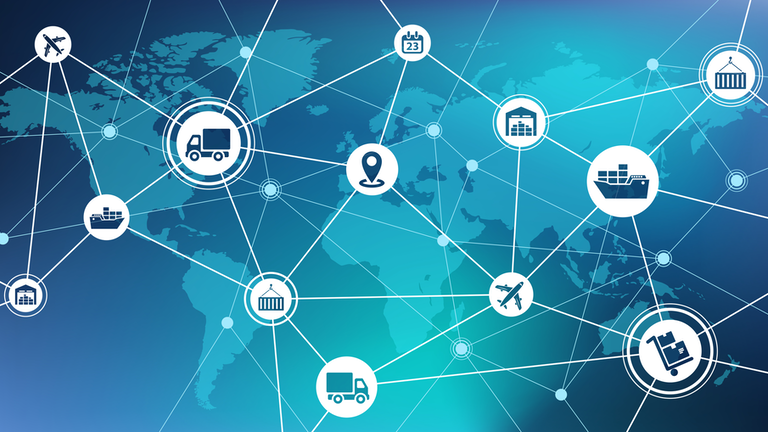Renewing resilience for supply chains
To achieve this, companies – including GE – are increasingly looking at three levers: digitalisation, global partnerships, and localisation. This multi-layered approach is key to helping businesses not only address the current ‘new normal’ but also to ensure they are ready for whatever challenges may arise in the future.
 |
| Renewing resilience for supply chains, source: industryweek.com |
Seamless digital connectivity
Digitalisation was already on most leaders’ radars before the pandemic, but now it is even more essential. To support trade and supply chains, we need to build a seamless digital infrastructure that allows knowledge, approvals, permits, and licenses to flow quickly across borders, thereby reducing cycle times and costs.
This will require collaboration from the public and private sectors in areas such as financing, policy articulation, and implementation of the necessary digital infrastructure. This was emerging before the pandemic and has only gathered steam since.
Partnerships
More resilient supply chains can be achieved through increased global partnerships. On the healthcare front, last year when there was significant demand for ventilators, GE Healthcare secured off-license approval for the use of existing anesthetic machines as emergency ventilators in Australia. This immediately added approximately 1,500 emergency ventilators to the national inventory. We could not have accomplished this without partnerships with health and regulatory authorities.
In Indonesia, during the depths of the pandemic, we were able to deliver our advanced HA gas turbine technology to the Java One project on schedule. We did so by staying close to partners and while following the strict protocols and procedures onsite to ensure safety. This project is critical for the country: it is eventually expected to add more than 1.7GW of electricity to the national grid, equivalent to supplying electricity to 11 million homes in Indonesia.
Partnerships will also be crucial in sparking the next supply chain innovation – perhaps in the digital sphere. We see this sentiment reflected in the recently released GE Global Innovation Barometer. It found that 86 per cent of senior executives polled in 10 countries around the globe believe increasing partnerships across countries, industries, and sectors would help drive innovation.
Making it local
Finally, and perhaps most impactful in strengthening supply chains, is localisation. At GE, we have been growing our local and regional manufacturing for years. Across ASEAN, our investments have included a number of manufacturing and industrial sites.
Examples include aircraft MRO facilities in both Malaysia and Singapore, and a wind turbine generator manufacturing facility in Vietnam – the only facility of its kind in the country. GE Repair Solutions Singapore is one of our largest repair and modification centers for F-class and aeroderivative gas turbines, etc.
In Vietnam, GE has developed the Haiphong multimodal/brilliant factory – the only factory exporting wind turbine generators in the country; Dung Quat HRSG facility, one of only two HRSG facilities worldwide; and the Phu My reconditioning workshop in the southern province of Ba Ria-Vung Tau.
With localisation, during the pandemic we were well served by these efforts in the face of restrictions on the movement of goods and people. Having so much talent in-country around the world helped us continue ongoing projects with minimum disruptions. We are able to deliver for customers with speed. A strong local workforce has been invaluable during the pandemic and will continue to be in a post-outbreak environment when flying workers in and out of job sites is likely to become less sustainable.
There is no doubt the rise of remote working is a reality that will remain part of the new business environment. However, nothing replaces having feet on the ground with our customers, and we will surely find a new equilibrium that balances the efficiency and sustainability of virtual contact with in-person, face-to-face engagement.
By maintaining a clear-eyed view of the future – based on what is actually happening and not what it once was or what we wish it were – businesses can build the resilience they need to weather whatever challenges and changes we are likely to face in the future.
What the stars mean:
★ Poor ★ ★ Promising ★★★ Good ★★★★ Very good ★★★★★ Exceptional
 Tag:
Tag:
Related Contents
Latest News
More News
- Addressing Vietnam's energy challenges with aeroderivative gas turbines (February 28, 2023 | 09:33)
- How to sprint ahead in 2023’s worldwide energy priorities (February 08, 2023 | 13:55)
- Boosting Vietnam's grid stability through gas turbine technology (November 22, 2022 | 20:02)
- Healthcare trio collaborates to provide thousands of free breast scans (October 27, 2022 | 17:19)
- GE Healthcare's vision for AI-backed radiology (September 29, 2022 | 11:53)
- GE brand trio to shape the future of key industries (July 19, 2022 | 15:35)
- GE unveiling brand names and defining future (July 19, 2022 | 15:16)
- GE: the shortest route towards sustainability (July 18, 2022 | 08:00)
- Be proactive in an uncertain world (May 20, 2022 | 11:40)
- GE secures first 9HA combined cycle power plant order in Vietnam (May 16, 2022 | 17:06)























 Mobile Version
Mobile Version